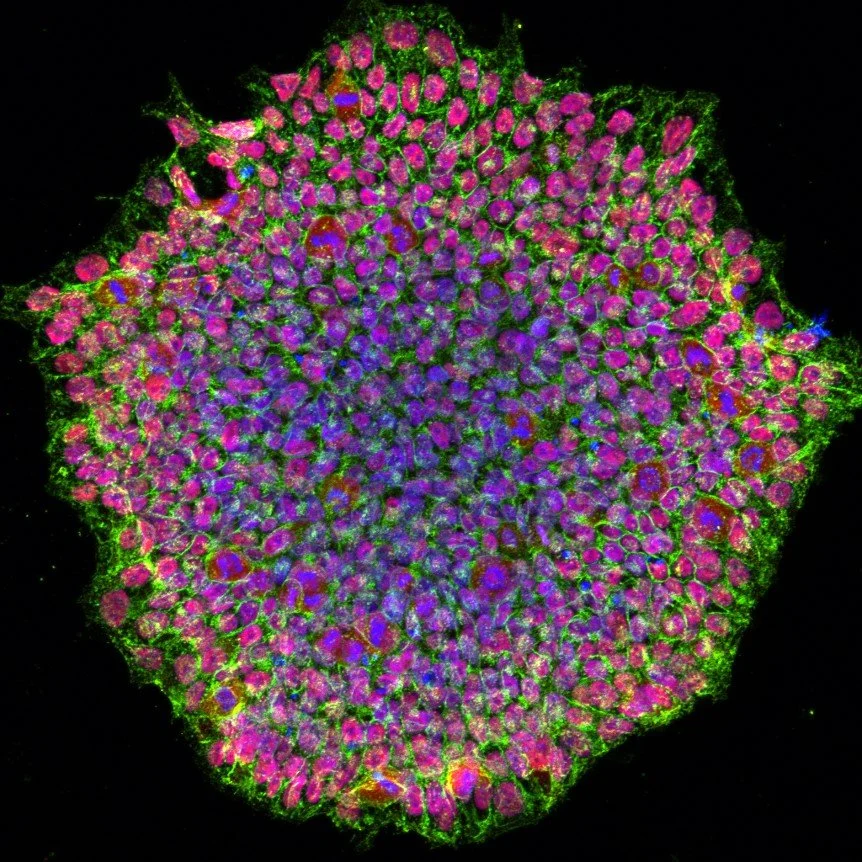Cellular Time Travel: An Introduction to Ipsc
By: Arman Momeni
Introduction:
The human body is amazing, lifting hundreds of pounds, running marathons, and brainstorming innovative solutions that change the world; humans can really do it all. However, none of our functions would be possible without cells. Cells are the foundational building blocks of life, forming together to build organs and provide function to an otherwise hollow shell (learn more about cells here).
Cell Types:
Let’s do a quick recap. The human body pertains two main categories of cells: somatic cells and stem cells. Stem cells are unspecialized cells, meaning they don’t have a specific function yet. They divide (through mitosis) to create daughter cells and are able to then specialize to carry out a more specific function, such as becoming a brain cell or a bone cell. On the other hand, somatic cells are all the other types of specialized cells (except for sperm and egg). They have specific functions that contribute to discrete organ systems, and they are responsible for helping an organism grow and develop.
Some examples of somatic cells
Once a stem cell specializes into a somatic cell, it cannot revert back to a stem cell, and loses its ability to branch into other types of cells. It will spend the rest of its days carrying out its specific function, splitting itself, and eventually dying. While somatic cells are crucial for human development, they do not pose of great aid to scientists and researchers when it comes to studying molecular mechanisms, and they are not very beneficial in therapeutic purposes. Stem cells, on the other hand, pose great research benefits, and therapeutic advantages. For example, stem cells can be used to replace damaged, dead, or decaying cells, and allow for the treatment of several potential illnesses or diseases. However, studying and growing regular stem cells is quite difficult. Stem cells maintain great variability and scientists do not know exactly what nutrients they need, which makes growing them for research very inconvenient. Because of the difficulty with stem cells, scientists have been looking for workarounds to be able to use stem cells in the health care field.
iPSC:
The solution, believe it or not, is to create (or induce) stem cells, which allows for both the benefits of pluripotency while also maintaining some level of stability. These stem cells are called induced pluripotent stem cells (iPSC).
A photo of a human induced pluripotent stem cell
An iPSC is created from different types of cells such as skin or blood, and they are reprogrammed to go back into a pluripotent state. Pluripotent simply means that the cell has the ability to produce/develop into several different cell types. Once a somatic cell has been reverted back into a pluripotent state, it will have the ability to give birth to an unlimited number of any other type of human cell. The ability to create a fresh supply of a somatic cells is revolutionary to medicine and health care. Just imagine, you are able to create new blood cells to replace the blood in a leukemia patient, or you can provide an abundance of neurons to treat brain diseases and disorders; the possibilities are truly endless. The beauty of using iPSCs for therapeutic purposes is that the treatments can be pre-emptive and personalized. Doctors, in theory, would be able to take a sample of a person’s cells and reengineer them to craft a specific treatment to their disease, infection, or illness.
Yamanaka Factors:
Now, you may be wondering: how can we actually craft an iPSC? While the science behind the process is quite complex, there is one key attribute that is crucial in creating iPSCs: the Yamanaka factors. The Yamanaka factors, named after Professor Shinya Yamanaka, are a group of protein transcription factors (transcription is the process of making an RNA copy of a gene’s DNA sequence). The Yamanaka factors, in specific, are Oct3/4, Sox2, Klf4, and c-Myc. Understanding the factors individually is not as important as understanding their overall purpose.
The Yamanaka factors are expressed in great quantities within an embryonic stem cell. Over-expressing these proteins can cause a specialized cell to become pluripotent, reverting it back to its stem cell state. In simple terms, think of the Yamanaka factors as a time machine, taking the somatic cell back to its younger days when it was a simple stem cell, capable of turning into anything that it dreamed of.
Works Cited:
Induced pluripotent stem cells (IPS). UCLA Eli & Edythe Broad Center of Regenerative Medicine & Stem Cell Research. (n.d.). https://stemcell.ucla.edu/induced-pluripotent-stem-cells#:~:text=iPSC%20are%20derived%20from%20skin,cell%20needed%20for%20therapeutic%20purposes.
Liu, X., Huang, J., Chen, T., Wang, Y., Xin, S., Li, J., Pei, G., & Kang, J. (2008, November 25). Yamanaka factors critically regulate the developmental signaling network in Mouse Embryonic Stem Cells. Nature News. https://www.nature.com/articles/cr2008309
Nature Publishing Group. (2007, June 14). Are stem cells hard to grow?. Nature News. https://www.nature.com/articles/stemcells.2007.22
Scudellari, M. (2016, June 15). How IPS cells changed the world. Nature News. https://www.nature.com/articles/534310a
Somatic cells. Genome.gov. (n.d.). https://www.genome.gov/genetics-glossary/Somatic-Cells#:~:text=Somatic%20cells%20are%20the%20cells,one%20inherited%20from%20each%20parent.
Yamanaka factors. Longevity.Technology - Latest News, Opinions, Analysis and Research. (2023, January 4). https://longevity.technology/yamanaka-factors/#:~:text=The%20Yamanaka%20factors%20(Oct3%2F4,for%20translation%20into%20other%20proteins.

